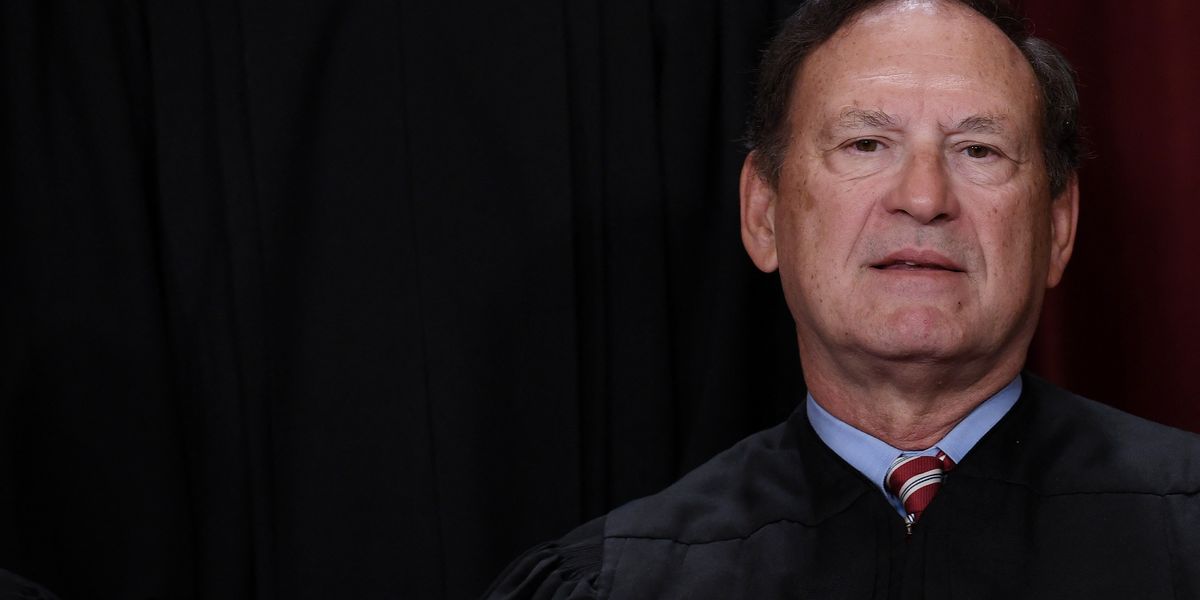A Washington-based married couple’s challenge to an obscure provision of the 2017 Republican tax law has the potential to become “the most important tax case in a century,” with far-reaching implications for federal revenues, key social programs, and Congress’ constitutional authority to impose levies on income.
That’s according to a new report released Wednesday by the Roosevelt Institute and the Institute on Taxation and Economic Policy (ITEP).
The policy groups estimated that if the conservative-dominated U.S. Supreme Court sides with the plaintiffs in Moore v. United States—which the justices are set to take up in December—nearly 400 multinational corporations could collectively receive more than $270 billion in tax relief, further enriching behemoths such as Apple, Microsoft, Pfizer, Johnson & Johnson, and Google.
The Roosevelt Institute and ITEP also found that Chief Justice John Roberts and Associate Justice Samuel Alito own stock in 19 companies that are poised to receive a combined $30 billion in tax breaks if the judges strike down the 2017 law’s mandatory repatriation tax, a one-time levy targeting earnings that multinational corporations had piled up overseas.
But the case could have impacts well beyond a repeal of the repatriation tax, which was projected to generate $340 billion in federal revenue over a decade.
Depending on the scope of the justices’ decision, the new report argues, the Supreme Court could “suddenly supplant Congress as a major American tax policymaker, putting at legal jeopardy much of the architecture of laws that prevent corporations and individuals from avoiding taxes, and introducing great uncertainty about our democracy’s ability to tax large corporations and the most affluent.”
“At the best of times, blowing a $340 billion hole in the federal budget would be catastrophic,” Matt Gardner, a senior fellow at ITEP and a co-author of the new report, said in a statement. “And if the court invalidates the transition tax in its Moore decision, that’s exactly what would happen: possibly the costliest Supreme Court decision of all time. And it would be hard to identify a less deserving set of tax cut beneficiaries than the companies that would reap at least $271 billion from repealing this tax.”
Charles and Kathleen Moore brought their challenge to the repatriation provision after they were hit with a roughly $15,000 tax bill stemming from their stake in an Indian farm equipment company. As the Tax Policy Center recently observed, the Indian firm is a “controlled foreign corporation (CFC), or a foreign corporation whose ownership or voting rights are more than 50% owned by U.S. persons who each own at least 10%.”
The Moores’ cause has been championed by billionaire-backed organizations and corporate lobbying groups, including the Manhattan Institute–which is chaired by billionaire hedge fund mogul Paul Singer—and the powerful U.S. Chamber of Commerce.
“That such a case involving such modest sums would make it all the way to the high court indicates that there is much more at play than a single family’s tax refund,” ITEP’s Gardner and Spandan Marasini and the Roosevelt Institute’s Niko Lusiani note in the new report.
The plaintiffs’ legal team argues that because the Moores’ shares in the Indian firm were not “realized”—they did not sell or receive a distribution from the company—they should not have been on the hook for the repatriation tax.
“The government, on the other hand, argues that almost a century of tax law precedent has established Congress’ broad authority to decide when and how to tax income, even without a specific realization event,” the new report explains. “What’s more, the income was clearly realized by the corporation, which is sufficient for income taxation of shareholders under various provisions of the existing tax code.”
While it’s possible that the Supreme Court will rule narrowly on the specifics of the Moores’ situation, the report authors cautioned that the justices “could also issue a broad decision that taxing income—of an individual or a corporate shareholder—requires realization, and that income taxation on multiple years of accrued income is unconstitutional.”
Such a sweeping ruling could preemptively ban a wealth tax—an outcome that right-wing supporters of the Moores have explicitly advocated.
“This case presents the court with an ideal opportunity to clarify that taxes on unrealized gains, such as wealth taxes, are direct taxes that are unconstitutional if not apportioned among the states,” the Manhattan Institute declared in a May amicus brief.
A broad ruling by the high court could also imperil key elements of the existing tax code, according to ITEP and the Roosevelt Institute.
“One of the most established of these pillars is known as Subpart F, which was enacted in 1962 to prevent American corporations from avoiding taxation through offshore entities or controlled foreign corporations,” the new report says. “Provisions related to Global Intangible Low-Taxed Income (GILTI), the branch profits tax; tax treatment of corporate debt; and others could be uprooted by five justices.”
“The Corporate Alternative Minimum Tax—enacted as part of the Inflation Reduction Act to create a basic corporate tax floor—as well as international efforts to curb international tax avoidance could be made constitutionally invalid,” the report adds.
The analysis stresses that the consequences of a broad ruling in the upcoming case would be profound, affecting more than just a handful of corporate tax provisions.
“In Moore,” the report warns, “the Roberts Court could decide with the stroke of a pen to simultaneously forgive big business decades of tax dues, increase the federal deficit over the long run, jeopardize future public revenue and essential social programs, escalate these multinational companies’ already sizeable after-tax profits, and further enrich their shareholders.”



:-<